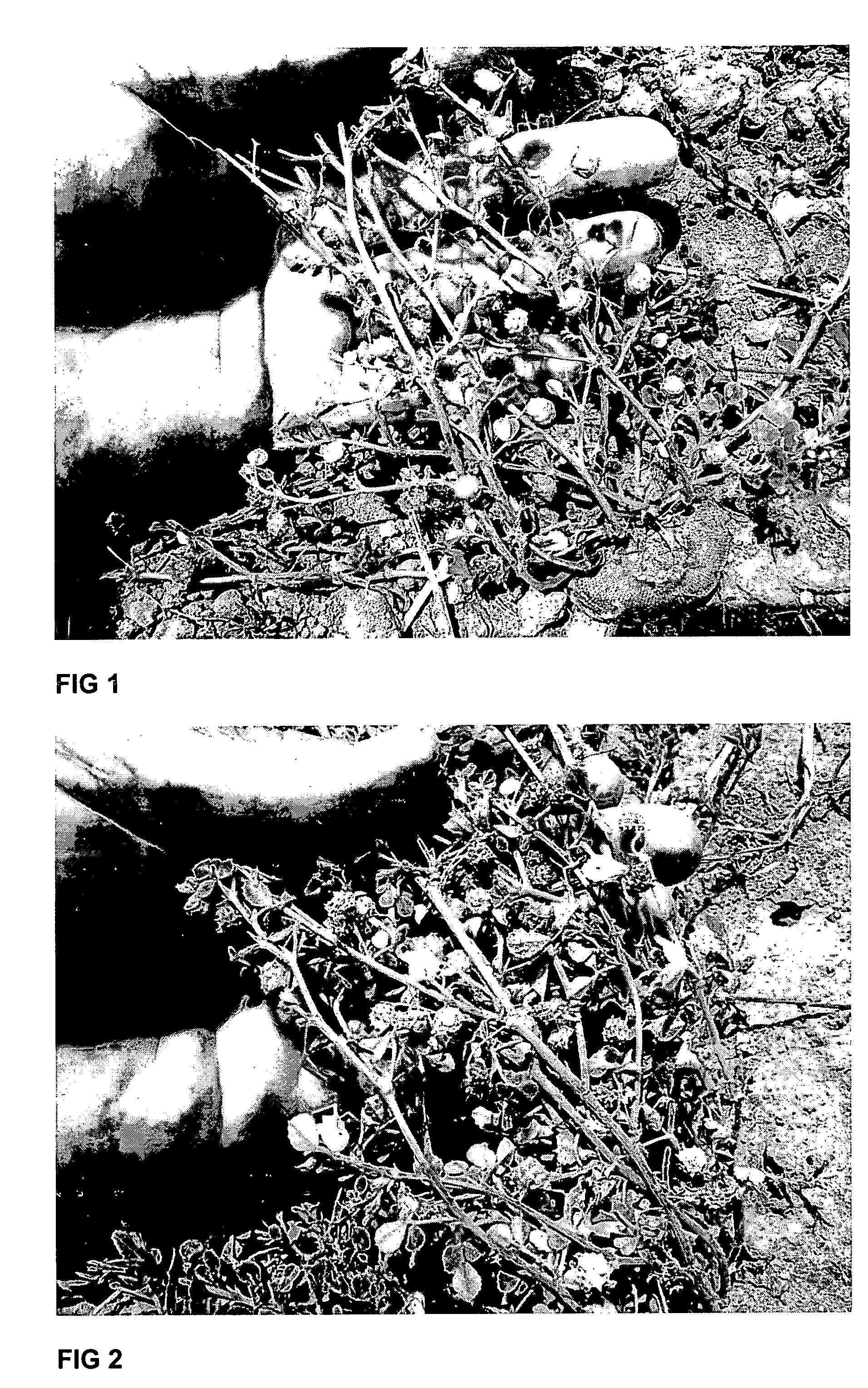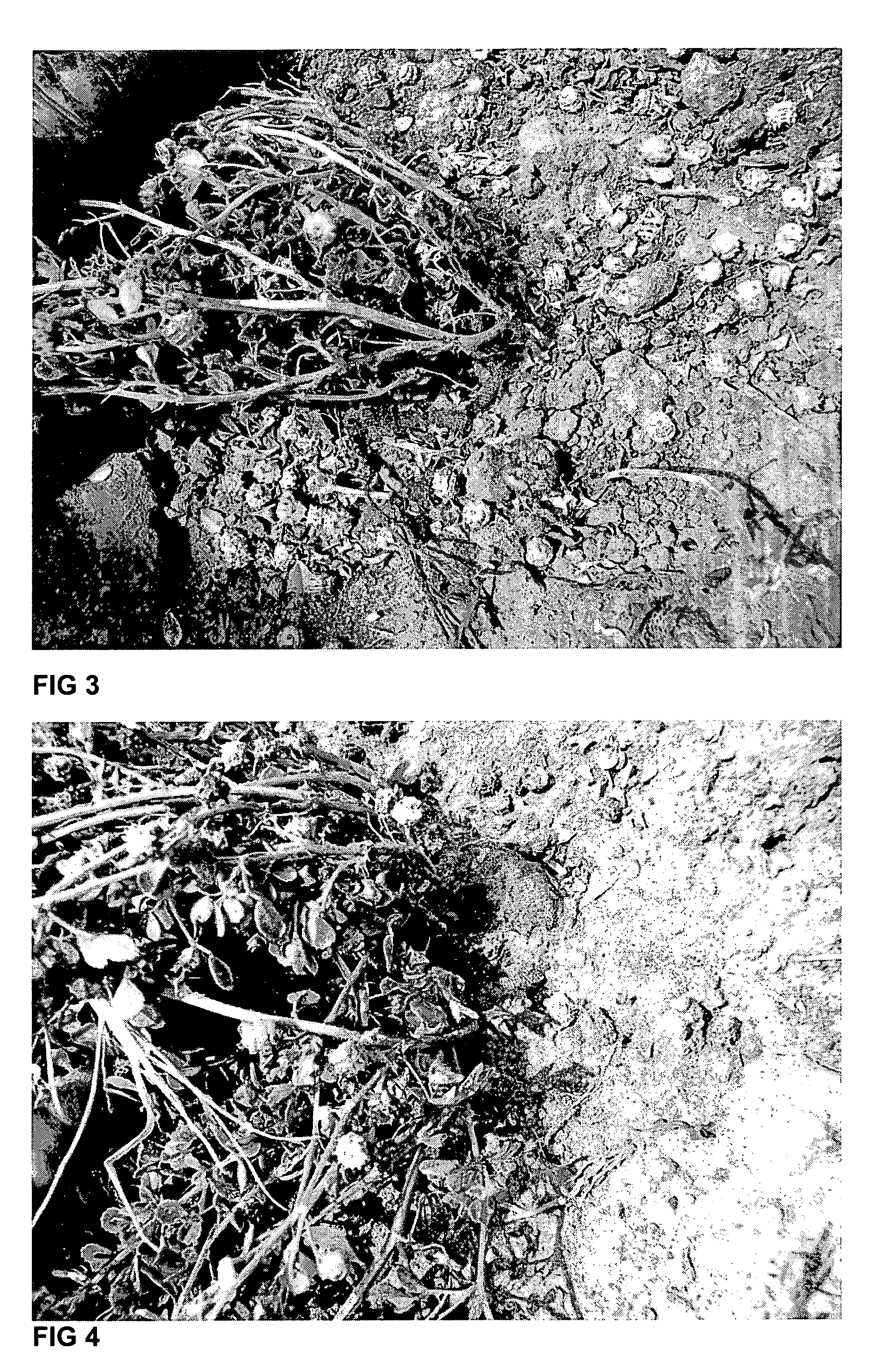Pasture, forage and seed production technology through pod and leaf retention on annuals of the Medicago genus (annual medics)
a technology of annuals and legumes, applied in the field of improved cultivars of annual pasture and forage legumes of the medicago genus (annual medics), can solve the problems of seed cost, seed cost related to the difficulty of harvesting and cleaning the seed, and the slow harvesting process
- Summary
- Abstract
- Description
- Claims
- Application Information
AI Technical Summary
Benefits of technology
Problems solved by technology
Method used
Image
Examples
Embodiment Construction
[0019]As a base cultivar for mutation treatment, Herald (M. littoralis) was used. A description of this base cultivar can be found in Plant Varieties Journal, 1996, Volume 9, Issue 2, page 49.
[0020]Chemical mutagenesis, using various doses of sodium azide (as suggested in the scientific literature), was initially trialled. However, after about a year, it was concluded that this treatment was insufficiently effective, as it resulted in high mortality rates, but low rates of mutation, at effective dosages. It was then decided to try irradiation.
[0021]Preliminary tests, carried out under the direction of the inventors by the International Atomic Energy Agency Plant Breeding Laboratories, Siebersdorf, Austria, showed that treatment of desiccated seed with between 200 and 300 Gy of gamma radiation (source: Cobalt 60) gave acceptably high levels of mutation, associated with low mortality. The gamma irradiated seed therefore showed higher treatment effects with respect to mutation, at lowe...
PUM
| Property | Measurement | Unit |
|---|---|---|
| weight | aaaaa | aaaaa |
| Atomic Energy Agency | aaaaa | aaaaa |
| strength | aaaaa | aaaaa |
Abstract
Description
Claims
Application Information
 Login to View More
Login to View More - R&D
- Intellectual Property
- Life Sciences
- Materials
- Tech Scout
- Unparalleled Data Quality
- Higher Quality Content
- 60% Fewer Hallucinations
Browse by: Latest US Patents, China's latest patents, Technical Efficacy Thesaurus, Application Domain, Technology Topic, Popular Technical Reports.
© 2025 PatSnap. All rights reserved.Legal|Privacy policy|Modern Slavery Act Transparency Statement|Sitemap|About US| Contact US: help@patsnap.com


